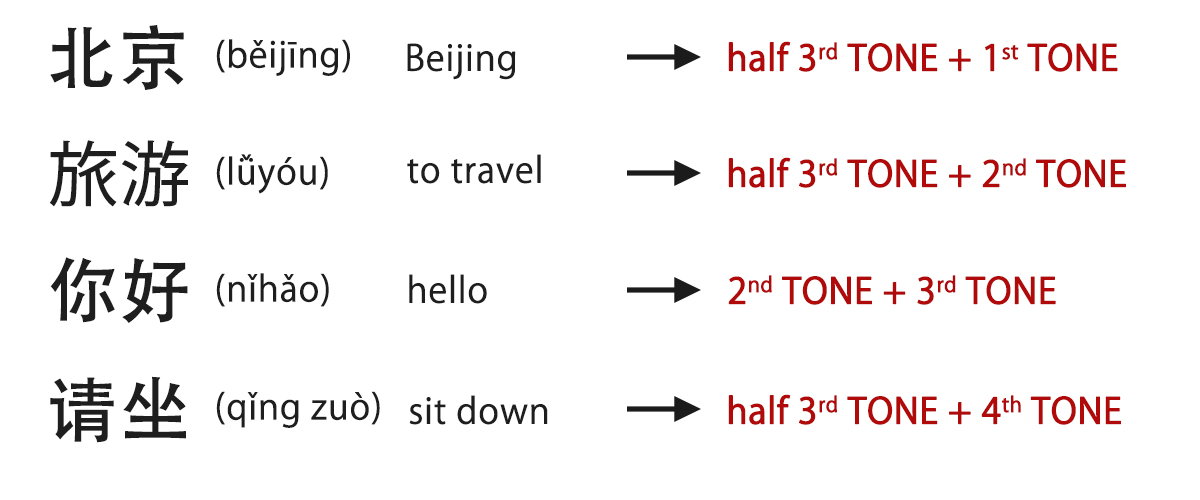The tones: the exceptions
After talking about the five tones of the Chinese language in the previous lesson, it is important to clarify that there are some exceptions to the rule. These are, mostly, related to the third tone, that:
- When it is followed by a 1st, a 2nd or a 4th tone, it is pronounced as a half third tone (hence, only the low, falling tone is heard) while the following tones remain the same
- When it is followed by a 3rd tone, it is pronounced as a second tone.
This happens exclusively in the pronunciation, the phonetic transcription doesn’t change. Therefore, without the help provided by the pinyin, one must remember this rule.
Here is an illustrative scheme.

Another exception is related to the two characters 不 (bù - not) and 一 (yī – one), respectively a 4th and a 1st tone, which are pronouned as a 2nd tone when followed by a 4th tone or a neutral one. Finally, 一 when followed by a 1st, a 2nd or a 3rd tone is pronounced as a 4th tone.
comments powered by Disqus